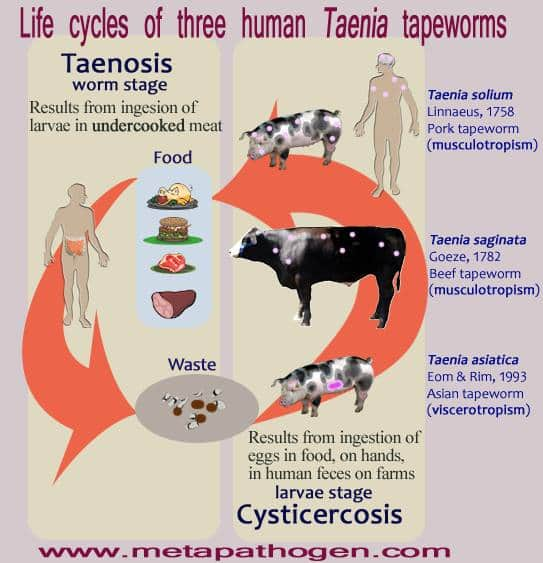
If you think that you have been infected by an adult tapeworm, you’re not alone. The infection is far more common in the United States than in many other countries. It’s an infection of the intestines caused by a tapeworm, called a taenia. In order to confirm your diagnosis, your health care provider will need to look at your faeces. The genus that is responsible for this condition is Taenia.
Intestinal taeniasis is a mild disease. Symptoms depend on the species of Taenia present in the body. However, gastrointestinal taeniasis is often asymptomatic. Common symptoms are abdominal pain, diarrhea, and an unpleasant feeling caused by proglottid discharge. Rare symptoms include general malaise and neuropsychiatric disturbances. After a person has been diagnosed, the signs and symptoms may disappear, or they may worsen.
A person with taeniasis will generally experience no symptoms, but symptoms can develop as the tapeworm grows in the intestine. Intestinal taeniasis is most often associated with mild symptoms and may last for eight to fourteen weeks. The most common signs of this condition are abdominal pain and diarrhea, as well as a gastrointestinal infection called diphyllobothrium. Although the most common symptom is abdominal pain, other common symptoms include general malaise, weakness, and headaches.
Infections with taeniasis can be managed with antiparasitic drugs. The most common treatment for the condition is surgery. This treatment is usually very successful and can lead to complete remission. Fortunately, patients with single lesions do not experience seizures. The disease is generally treatable, but it can be difficult for those with multiple lesions. There is no known cure for the disease. It’s important to treat the symptoms correctly.
The infection can occur in adults and children of all ages. It can be spread through contaminated water or food. Tapeworms live in the intestines and lay eggs. The taenia eggs attach to the intestinal wall and multiply rapidly. Site Productos de Salud describes when a person has teniasis, he notices that he has severe perianal pain, and there are segments of worms in the stool.

This disease is caused by a tapeworm called taenia. Parasites can cause infections in the intestines, central nervous system, or skin. In this case, tapeworms will multiply inside the body and cause irritation in the perianal area. In some cases, taeniasis can cause a rash, and feces contain worm eggs.
A person infected with taeniasis may have no symptoms. The infection can cause inflammation and irritation of the perianal area. They may also notice worm eggs in the stool. The symptoms of taeniasis depend on the specific species. Some types of teniasis cause cystercercosis. Other types of taeniasis can also cause severe diarrhea.
This disease is caused by a worm in the gut and intestines that lives in beef. It’s caused by eating undercooked or raw beef. The contaminated meat has tapeworm larvae that are passed on to humans. The infection can be difficult to detect in the early stages because the worm is able to live for up to 12 feet in the human intestines without being discovered. The tapeworm can produce eggs that will eventually exit the body.
The infection is spread by contaminated food and water. The tapeworms are called cysticerci, and they live in the small intestine. They eventually develop into adult tapeworms, which then produce eggs in the perianal area and feces. The larvae then mature and release eggs in the perianal area. Occasionally, they can reach the central nervous system. Eventually, they can cause a severe infection and even death.
The most common symptom of taeniasis is a tapeworm infection in the small intestine. This is also known as cysticercosis. The symptoms of taeniasis include abdominal pain, nausea, and diarrhoea, and is a symptom of taeniasis. In some cases, the tapeworm may become lodged in the bile ducts, which can be a sign of more serious health problems.